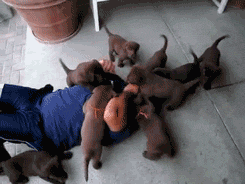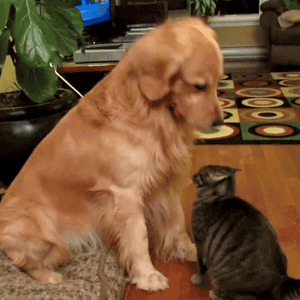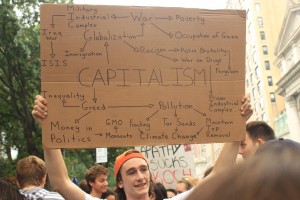The Digital Divide of Gender: Women Writers Versus the Trolls
Thursday, October 23rd, 11:28 p.m.
The Internet can be a tough realm for female writers. Several prominent female journalists suffer from a form of inadequate criticism: trolling.
Trolling refers to when users (the trolls themselves) provoke arguments and upset others by posting inflammatory, irrelevant, and excessive messages within a comment thread, forum, or other type of online community. Studies show that women are targeted more often than men. WHOA, or Working to Half Online Abuse, compiled a list of thirteen years worth of research. The list revealed 72.5 percent of online harassment victims were female, out of 3,787 people who reported harassing incidents.
This is not a coincidence. Women experience more vulnerability to feedback and comments from trolls more often than men. This growing inequality between men and women contribute to a new kind of digital divide revolved around gender.
 Galo, a Ramapo College Class of 2013 alum, wrote a response for Mic last October to Slate’s article on why girls shouldn’t get drunk. Her story included her own experiences as a survivor of sexual assault. However, despite her open heart and supplemental research, critics were harsh. “I found two comments left by an anonymous user directed at me, accusing me of fabricating my story. ‘I hope you look in the mirror and hate yourself every day. You’re not a real survivor. I am an actual survivor and your lies discredit us.’” Another user commented, “Sarah just felt guilty for fooling around and tried to ruin a very nice boy’s life.”
Galo, a Ramapo College Class of 2013 alum, wrote a response for Mic last October to Slate’s article on why girls shouldn’t get drunk. Her story included her own experiences as a survivor of sexual assault. However, despite her open heart and supplemental research, critics were harsh. “I found two comments left by an anonymous user directed at me, accusing me of fabricating my story. ‘I hope you look in the mirror and hate yourself every day. You’re not a real survivor. I am an actual survivor and your lies discredit us.’” Another user commented, “Sarah just felt guilty for fooling around and tried to ruin a very nice boy’s life.”
Statistics reveal women are more vulnerable than men to online trolling. In January, Amanda Hess laid out what it’s like to be a woman on the Internet through a series of studies in an essay for Pacific Standard Magazine. Hess illustrates an example: “In 2006, researchers from the University of Maryland set up a bunch of fake online accounts and then dispatched them into chat rooms. Accounts with feminine usernames incurred an average of 100 sexually explicit or threatening messages a day. Masculine names received 3.7.”
After these incidents of continual trolling, women are hesitant and less eager to publish in the future. “Writing as a woman, who uses personal stories, can be terrifying. After that happened to me, I didn’t write until the following April. I was afraid of being trolled again. I was afraid it would get worse,” Galo adds.
Galo is not alone. Alison Kinney, an online journalist, had a similar experience. Salon published her personal essay about racism, sexism, and how political comedians influence the media agenda.
“It attracted a huge amount of really ugly, nasty stuff, some of it racist, some misogynist,” says Kinney. “I purposely didn’t read the Salon comments, but my friends did and told me a little more than I wanted to hear.”
Women also face a label that never leaves their online presence. Kinney adds, “I’d much prefer the top hit on my name to be my essay on German performance art and the operas of Richard Wagner.”
Four Tips for Survival As a Entrepreneurial Journalist
Friday, October 3rd at 11:01 p.m.
Often, professional opportunities are not difficult to come across. Usually, these opportunities are already at your doorstep. Young journalists looking for entrepreneurial opportunities should consider the following tips. Although many entrepreneurial journalists can benefit from these four pieces of advice, they can benefit anyone emerging into the field of business.
Look for what is already out there. Many new, ambitious journalists want to jump ahead with a fresh start up idea. Although there is money to be earned in start up businesses, the decision may be premature. Before embarking on a business project, every new journalist needs experience working on a team.
Poynter strongly encourages to “start by investigating existing solutions.” Consider the following questions. What has been done already? How can you approach a pre-existing idea something differently? How can you separate your ideas from someone else’s?


Connect with the professional and personal networks you already have. Professionals always take the advantage of networking events, but how often these professionals you think to go back to those connections? You exchange business cards at conferences or business dinners, add each other on LinkedIn the next day, and that person becomes another number on your friend list. Instead of counting your connections, keep in touch with them. Do not only message your connections when responding to a job posting, but stayed connected and interact with their updates.

Think innovatively in whatever you do. Always figure out new, creative ideas through whatever position you have. Whether you are interning at a small-town newspaper or larger known publication, businesses constantly seek innovative thinkers. This type of thinking offers leeway for experimentation and expression.

Consider sustainability. A good idea creates profit, but a great idea sustains itself successfully. There is a difference between making money and surviving. Even if your company thrives economically, figure out the best way the supplies and materials are sold. Make sure your ideas support themselves through efficient practices and habits.

GIFs from reactiongifs.com
I love how similar your post is to the buzzfeed sites. There’s always a point in bold and a small paragraph explaining further details. The GIF’s were great but I would have tried to find a gif that suited the paragraph more. I really like how your paragraphs are short and not lengthy and too descriptive. By keeping them short, it was easier to focus on what you were saying. I also noticed a few errors, but otherwise, it was very enjoyable.
Market Assessment and Adaptation: Instagram Versus Vine
Friday, October 3rd at 9:29 p.m.
Entrepreneurial journalists find holes within existing markets. What commodities are available to the public and which ones are not? What commodities economically thrive and which ones do not? These leaders create opportunities for themselves by studying and examining the successes and failures of previous and current products and services.
Leaders within the field “start by investigating solutions.” An article on Poynter utilizes Politico as a fruitful answer to the question: “Would people pay for your solution?” Around the time of the site’s launch, there were already plenty of sources committed to political news and updates, “but its founders identified an approach that was fresh, and homed in on pain points among consumers of political news.” Particularly, Politico stuck out through multi-media forms of first-hand government affairs coverage: print newspaper, television coverage, and eventually, an online magazine. The organization also pairs with larger networks to expand important content.
Mark Briggs, author of Entrepreneurial Journalism: How to Build What’s Next for News, first suggests identifying the current market before beginning a startup company or similar project. Assess the nature of the business world. Interestingly enough, this vastly overlaps Poynter’s advice. For example, a developer could have an outstanding idea, but inevitably, it will not be as successful if there is already a competitive and intense market for the same form of service or product.
The online video sharing service, Vine, was founded in 2012. The app’s opening dashboard features six-second clips posted by users. Essentially, the social network relays the layout of Twitter and Instagram; instead of textual or pictorial statuses, it concentrates on consumer-generated brief video snippets. In addition to a new platform, Vine created a new, popular method to communicate on social media networks. The company identified the market for a fresh, new service that wasn’t yet produced.
Secondly, Briggs encourages journalists to respond to the market, of course, after testing it. After identifying and assessing the market, business leaders should have a definitive idea on how well or not a service or product will survive. Nonetheless, the process still is unpredictable. Even when great ideas go into the market and don’t have a decent response from consumers, the best practice is to modify your product or service and adapt to the market. Trial and error allows for journalists and other business leaders to revaluate and reassess the product or service they wish to continue selling.
Pre-existing companies also have the opportunity to expand their services and products to fit the evolving market. Instagram adapted to the changing social media business. Instagram, first launched in 2010, enabled users to take, publish, and share pictures, including those edited with the software’s several photo filters. When Vine’s mobile application became popular, it was often referred to as “Instagram for video.” According to CNBC, because of the two companies’ cutthroat competition, Instagram added a feature to include 15-second in June 2013. Instagram, although it was an existing company, responded and adapted to the market by including a video service.
The New Definitions of Activism and Grassroots Organizing: Climate Week, Brought To You By…
Sunday, September 28th at 10:19 p.m.
The nature of social movements is changing.
Climate Week involved more corporations than any other social protest in recent history. These series of events, during the week of Sept. 22, in New York City, including the much-anticipated People’s Climate March and the not-so-anticipated Flood Wall Street protest, were organized to raise awareness about the importance of global sustainability. According to Politico, the People’s Climate March alone drew 400,000 participants and became the largest climate-related protest in history on Sunday.
While the Climate Week is not the first of its kind, it differs from previous actions against climate change. For instance, in 2009, several campers internationally rallied against major carbon emissions under the Camp for Climate Action campaign, without the support of a corporation.
Unlike staunch environmentalists involved in the Camp for Climate Action, the march did not begin as a grassroots movement. Over 1,500 other like-minded organizations, including the Sierra Club, 350.org and Food and Water Watch, rallied national support for the People’s Climate March alone. Larger global partners – including Swiss Re, Lockheed Martin, and the Climate Group – planned and funded several of the events throughout the week.
There now lies a predictable relationship between Climate Week and Occupy Wall Street. The anti-Wall Street movement – fueled by a unique combination of socialism, communism, and anarchy to address progressive issues, such as sustainability – conveniently intersects with a week of events funded by corporations. Plus, both movements mobilized participants through popular social networks.
“I heard about [the People’s Climate March] through a friend that volunteered through 350, weeks in advance,” explains Ryan Ritter, a senior at Ramapo College. “My friend was a part of the Occupy Movement. The Occupy Movement had a good hand in promoting [the People’s Climate March] to get people to come through social media.”
Following the march, environmental activists gathered again in the Financial District in Lower Manhattan for Flood Wall Street. With the catchphrase “End Capitalism. End the Climate Crisis,” the progressive overtone of #FloodWallStreet especially relays the energy of the Occupy Wall Street movement; some even consider this protest as the revival of a movement that began three years ago. Demonstrators dressed in blue and blocked traffic on Broadway. Although there were significantly fewer demonstrators involved with Monday’s protests, the New York Daily reported 102 arrests. Although there was a buzz on social media prior to, during, and after Flood Wall Street, it was not nearly as publicized as the People’s Climate March.
“It’s interesting how little media coverage [Flood Wall Street] received leading up to the march on Sunday, considering the Flood Wall Street arrests drew so much attention immediately after the event,” Dylan Sprayberry, a senior at Ramapo College of New Jersey, explains. “[Both events] still ended up as essentially a grassroots hodgepodge of people relatively interested in the same goal but not necessarily with the same intentions as far as activism goes.”
While many demonstrators thrived off anti-capitalist chants and picket signs, they also participate in an event organized by monster corporations. Although these NGOs strive themselves with sustainable business practices, many participants’ outlook on the dichotomy of sustainability and big business contradict the involvement of as for-profit industries. There appears to be massive cognitive dissonance; the role of anti-capitalism within these demonstrations undoubtedly contradicts the processes in which they were organized.
Blogger and Occupy activist, Arun Gupta, criticizes the People’s Climate March as a massive PR campaign: “I’ve never been to a protest march that advertised in the New York City subway. That spent $220,000 on posters inviting Wall Street bankers to join a march to save the planet, according to one source.”
Should it take subway posters to get people involved? Are they, too, considered “activists”?
“Sometimes, it takes the simplest efforts to get people involved. Some don’t want to be die-hard activist, but they feel satisfied with minimal effort,” Halle Pineiro, a junior at Ramapo College of New Jersey, “It’s important to have supporters even if they don’t dedicate their whole lives to the cause.”
Social consciousness of global politics, especially around the environment, is the first step to enact change. After all, a movement begins simply with creating awareness. But is awareness alone enough to make an impact?
Similarly to other environmental protests, Climate Week emerged as a response to a large meeting between international political representatives. On Sept. 23rd, over 100 world leaders in the United Nations met for the 2014 Climate Summit in New York City. President Obama took many Americans’ deep concern for the environment into account, but was it enough?
There’s a new definition of activism in the 21st century. The levels of activism vary from social consciousness to apparently, getting arrested. If future protests follow the model of the Climate Week, grassroots organizing happens only after the mediation of business. The dawning of the post-millennium social movements will favor not the public, but moreover, the interests of corporations.
Photos by Halle Pineiro, Junior at Ramapo College of New Jersey
Community & Business Development through Forbes & FoodBabe.com
Thursday, September 11th at 11:14 p.m.
So you want to launch your own website, huh? Mark Briggs, author of Entrepreneurial Journalism: How to Build What’s Next for News, suggests the following advice to those seeking to develop a new website: 1) fostering a digital community and 2) conducting business while being a journalist. A community brings together and unites consumers to build a consistent readership and a loyal fan base. Business transactions commoditize the website to gain economic success and ensure its survival in a competitive market. Talented writing alone doesn’t determine nor measure the success of journalism anymore.
However, it takes relentless endurance to shape and brand a project in the 21st century. Forbes describes their innovative, new journalism staff as brand-building self-starters that learn from themselves, as well as their audiences. The days of news hierarchy are over. The team expects to engage and start conversations with their readers, instead of only relying on them to consume news. By embracing a community of engaged readers, the company continues to produce profit and publish news.
Vani Hari started a blog over three years ago, dedicated to healthy living after a poor diet landed her in the hospital. FoodBabe.com sought to share health-conscious recipes, expose products with harmful ingredients, and promote the importance of food safety. It has matured into much more than a simple blog. #FoodBabeArmy, a hash tag first seen on Twitter, continues to foster the community of enlightened and progressive eaters to further push towards food justice. Additionally, she added an online store that offers a wide array of products including organic beauty products, kitchen appliances, and work-out equipment.
A common ethical dilemma of journalism, especially on the Internet, is credibility. The University of Wisconsin’s Center for Journalism points out the new participatory element of the digital world: “The ‘democratization’ of media – technology that allows citizens to engage in journalism and publication of many kinds – blurs the identity of journalists and the idea of what constitutes journalism.” Who exactly is a journalist?
More recently, Vani — otherwise known as “Food Babe” — challenged Starbucks to expose the hidden ingredients in the well-anticipated holiday favorite, the Pumpkin Spice Latte; once the company finally exposed the genetically modified chemicals in the steamy beverage, she posted a recipe of how to make a Pumpkin Spice Latte with natural ingredients at home. Quickly, Vani gained credibility within the muckraking community, despite working from home without a larger news network behind her back.
Traditionally, journalists were separated from the public as broadcasters, staff writers, editors, etc. According to a Pew Research study conducted last year, half of adult Americans receive their news from their Facebook dashboards. The line of credible news is blurred between credible journalists and less-involved civilians. Journalists now have to establish their authority and separate themselves from other Internet users. Brand credibility incorporates both elements, of creating a community and conducting business; an audience is willing to contribute to a website that has a substantial, reliable team behind it.
Vani’s blog didn’t gain professional attention until she began investigating the chemicals in common food products; she has even appeared on major television networks, such as CNN and Good Morning America. Because of her appearance on television and in print media, her authority on food safety not only is reliable and separates her from the average blogger, but promotes her website to a larger audience.
The Internet, Post 9/11: the United States in the Digital Age
Thursday, September 11th, 2014 at 11:39 a.m.
Access to information was one of the biggest benefits of the Internet. 25 years later, Pew Research says 87% of U.S. adults say they use the Internet. That’s a huge change from the 42% that didn’t know what the Internet was in 1995. Most importantly, users not only have the ability to contribute and post their own information, instead of exclusively retaining others’ content.
Secondly, the freedom of speech grows with the development of social media technology. While Facebook usually is the most commonplace social media website of choice, Americans can choose from a wide array of companies to express themselves and create content, (mostly) free of censorship: Twitter, Tumblr, Pinterest, YouTube, Instagram, etc.
Users receive news through these different networks as well. A friend’s status update on your Facebook dashboard from this year (let’s say, about a celebrity’s death) shares the same value and worth as a live television broadcast from a large network, such as CNN or MSNBC. The information super highway becomes an equalizer for those wishing to share their commentary, opinions, and editorials. It’s easier than ever to support or oppose a cause, a product, an ideology, you name it. The hierarchal tension between the audience and the previously agenda-setting news organizations diminish with the Internet, because everyone has the potential to be heard.
There’s a relationship between the freedom of speech and access to information. Because users have the ability to post so freely, their opinions turn into information, reading material that other users can consume and comment on. Contemporary technology brings light to differing – sometimes, controversial – opinions and dispositions, especially those surrounding current events. (Let’s not forget Wikileaks so quickly.) The United States government fails to censor everything posted online, inside or outside of the country.
For instance, the federal government’s intelligence community notices the increase of “terrorist chatter” – the discussion amongst developing terrorist organizations – on the Internet and over phone lines as the anniversary of 9/11 draws closer, according to a recent story for the Washington Times. The same trend arose surrounding the World Trade Center attacks over a decade ago.
It’s rather difficult to compare terrorist chatter today to similar happenings nearly fifteen years ago. While the Internet has changed immensely in the past 25 years, the World Wide Web is in a significantly different place than it was in 2001. In 2000, only half of Americans had a cell phone; now, approximately the same number of Americans has smartphones. The Internet comes in different forms, with its different devices. While intelligence communities already have the resources to brainstorm, their various mediums keep growing.
More people have access to differing opinions through the emergence and constant influence of social media. While the White House grows in online presence, so does terrorist chatter. In 2001, large news networks dominated the world of politics and there were no influential social networks to voice opinions. However, the increase of social media – one of many examples of how the Internet has changed in the past 25 years – encourages greater access to information, the freedom of speech, and decrease the dominance of large news networks.




Your column flowed really nicely and the statistics you put added value. I like how you tied in freedom of speech with the development of social media technology and i would like to hear more about it. Maybe more insight into this would be good, it is interesting. Great work!
You gave great advice in your ‘Four Tips for Survival As a Entrepreneurial Journalism’ column. The column was very informative and your insight would be helpful for any person who were to read this.